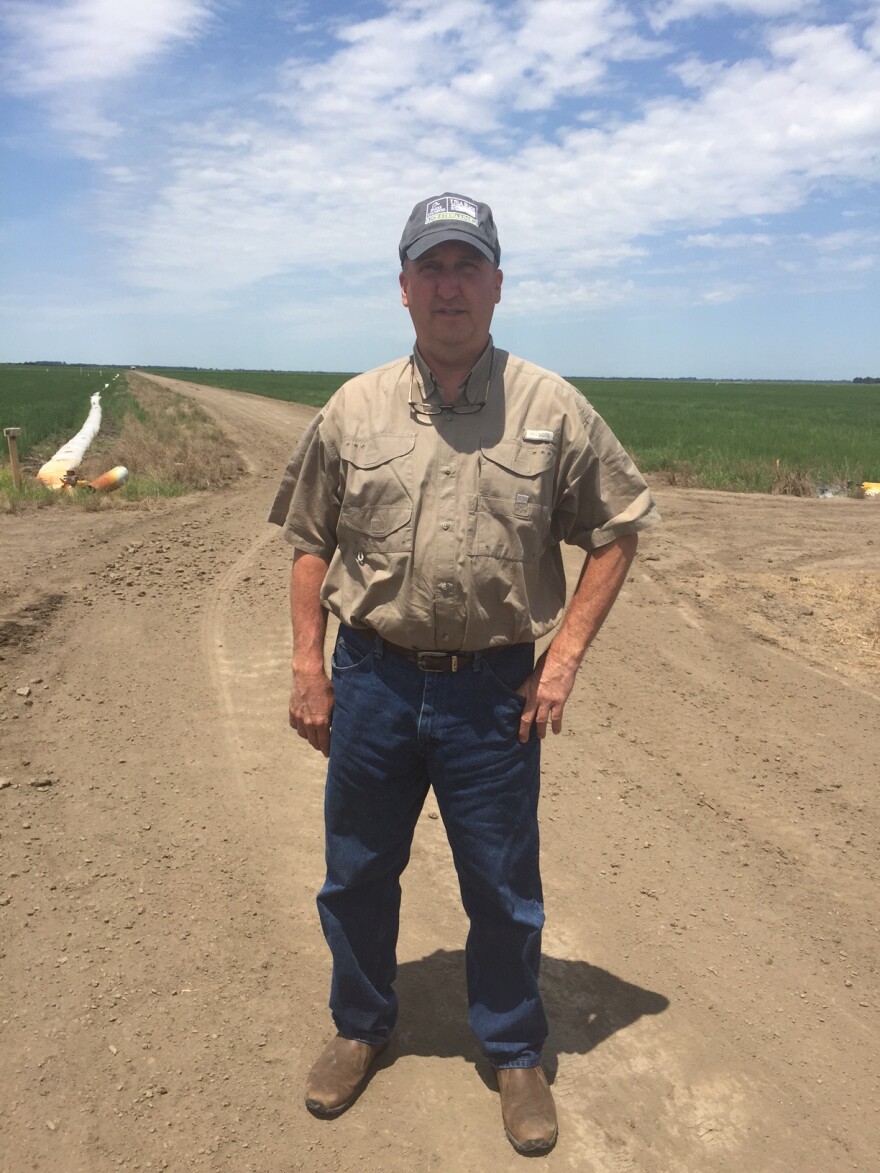CLARIFICATION: Michele Reba is with the U.S. Department of Agriculture's Agricultural Research Service, Delta Water Management Research Unit. Her affiliation was misrepresented in an earlier version of this story.
Four Arkansas farms have made a deal with the world’s largest software maker, Microsoft. The Whitaker Farms in McGehee, Isbell Farm in Stuttgart, Hooks Family Farm in Hazen and Florenden Farms in Burdette join two farms in California and one in Mississippi as the first recipients of carbon credits for rice production.
The program rewards farmers for reducing greenhouse gas emissions from rice, considered among the more environmentally damaging of all crops. With a carbon credit, companies can exceed emissions caps by paying for reductions elsewhere, such as on a farm.
The dollar amount was not disclosed, but the credits were purchased by software giant Microsoft at “fair

market value,” according to Shahira Esmail, an agronomist with Terra Global Capital, the San-Francisco based company that managed the deal.
Microsoft will use the credits to voluntarily offset emissions from its business, which exceed the cap set in California. Under the program, companies can purchase the value of gasses that were contained or never produced in other industries, even in other states, in order to reduce their own overall carbon footprints.
At the other end of the market, rice farmers earn the credits by reducing methane, a greenhouse gas emission, in various ways, and sell them to California companies. At the Florenden Farms, farmer Mike Sullivan is using an alternate wetting and drying system on his rice fields, which stretch along State Highway 148 from Burdette to Luxora in Mississippi County.

“Rice is a huge methane emitter, and there’s a lot of rice around the world,” said Sullivan. The methane is produced from bacteria that breeds in the ground during the rice farming process.
Traditionally, farmers are taught to flood their rice fields all the time, but under an alternate wetting and drying regimen, the methane-producing bacteria that thrives only in wet conditions is reduced during the dry periods.
Farmers who have only known the traditional method may have some initial resistance to alternate wetting and drying, according to Merle Anders, a private consultant for farmers.

“Huge reservations. The big one is that daddy said if the field got dry, you were done, you were going to lose money and you were going to be out of business,” Anders said.
Sullivan got some help with implementing alternate wetting and drying from researchers such as Michele Reba of the U.S. Department of Agriculture's Agricultural Research Service, Delta Water Management Research Unit. They tested the method on smaller fields first.
“In the studies that we’ve done, during the treatment phase, the amount of water that’s applied has been reduced by as much as 45 percent, and the yields have been consistent,” Reba said.
Sullivan, who’s known as a forward-thinker willing to take risks, got credit from researchers for being willing to serve as an early adopter of alternate wetting and drying, which is common in the Philippines but still catching on in the U.S.
“He does some amazing management practices on his irrigation,” said Josh Hankins, a coordinator for the Rice Stewardship Partnership with USA Rice.
By the time rice hits the dinner table, supporters of alternate wetting and drying say, there is no difference in taste or quality.

“Absolutely none,” said Anders.
If anything, he said alternate wetting and drying, when done correctly, may produce a little bit less of the trace amounts of arsenic that naturally occurs in rice.
This story is produced by Arkansas Public Media. What's that? APM is a nonprofit journalism project for all of Arkansas and a collaboration among public media in the state. We're funded in part through a grant from the Corporation for Public Broadcasting, with the support of partner stations KUAR, KUAF, KASU and KTXK. And, we hope, from you! You can learn more and support Arkansas Public Media's reporting at arkansaspublicmedia.org. Arkansas Public Media is Natural State news with context.






